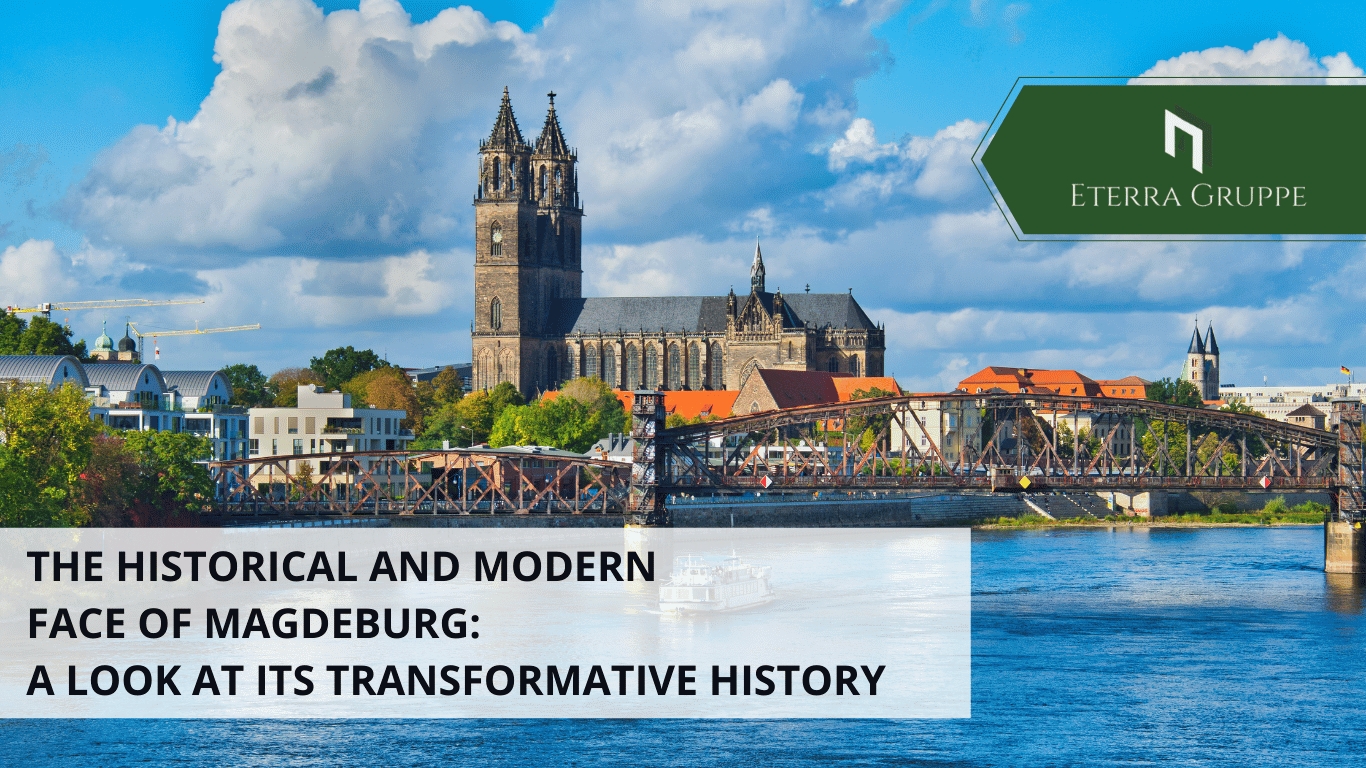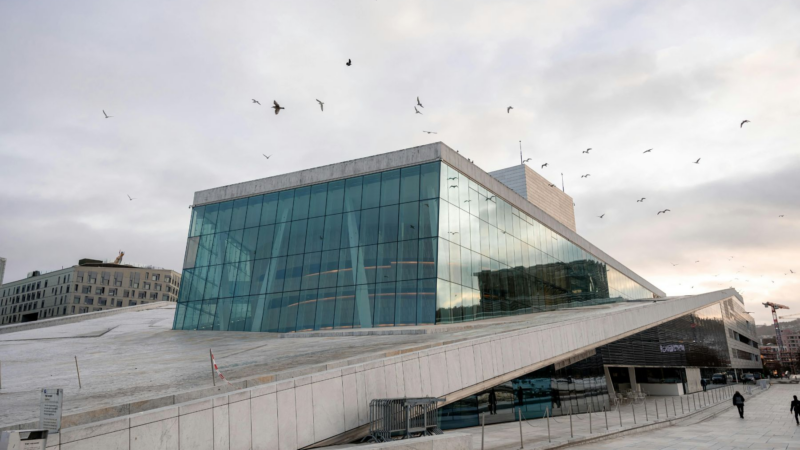Between Historical Heritage and Visionary Future – Historical Roots and Geological Features
Magdeburg is a place where history becomes tangible. From medieval rule to modern urban development, Magdeburg reflects the facets of human civilization and culture. Known as the pearl on the Elbe, Magdeburg is a city that, like few others, embodies the constant change of time. From the early days as an Ottonian foundation through the destruction of World War II to modern reconstruction, Magdeburg’s history is a lesson in resilience and renewal. At the center of this ongoing transformation are visionary figures such as Sven Bading and Daniel Slenters, Managing Partners of the ETERRA Group, who significantly shape Magdeburg“s future with their commitment and foresight.
Geological Formation and Cultural Flourishing
The Elbe, a lifeline and central element of both geological and cultural development in Magdeburg, has shaped the landscape over millennia, providing habitat and livelihood for people. From the beginnings in the Stone Age to today’s modern city, the Elbe has always played a central role. Magdeburg’s history dates back to the days when Henry I and later his son Otto the Great laid the foundations for the city’s and the church’s development. The strategic location on the Elbe, nestled in the fertile plain transitioning to the central uplands, predestined Magdeburg as a trade center and political hub. This geological and geographical favorability allowed the city to establish itself over centuries as a center of faith, power, and knowledge.
Following the Romantic Road: A Window into the Soul of Central Germany
The „Romantic Road“ in Saxony-Anhalt also leads through Magdeburg, recalling a time when the city grew into a significant intellectual, cultural, and economic center. The establishment of the archbishopric in 968 under Emperor Otto the Great marks a turning point in the city’s history. Magdeburg became a spiritual center and gained significance far beyond regional borders through the efforts of notable figures like Otto von Guericke.
From Ottonian Foundation to Archbishopric: Magdeburg’s Intellectual Heritage – Influential and Contested
The establishment of the Archbishopric of Magdeburg in the 10th century laid the groundwork for an era in which the city was both a spiritual and political power center. The sphere of influence of the Magdeburg archbishops extended far beyond the city limits and significantly shaped the region. The construction of Magdeburg Cathedral, the first Gothic cathedral built on German soil, symbolizes the city’s heyday and cultural richness.
Change and Renewal: The Reformation and Its Consequences
Despite severe setbacks, such as almost complete destruction during the Thirty Years‘ War and the bombings of World War II, Magdeburg has always demonstrated its ability to regenerate. The Reformation and the Industrial Revolution were catalysts that gave the city a new shape and direction. The rejection of indulgences and the turn to Protestant faith led to a fundamental change in the religious and social structure of the city. The introduction of the Reformation by Archbishop Sigismund of Brandenburg began a new era.
Between Destruction and Reconstruction: Magdeburg in the 20th Century
The destruction of World War II and the subsequent division of Germany left deep marks on Magdeburg. The reunification of Germany and the re-establishment of the Diocese of Magdeburg in 1994 mark a new beginning and the resumption of the city’s long Christian tradition.
ETERRA Group: Pioneers of Modern Urban Renewal
In this long tradition of change and renewal stand Sven Bading and Daniel Slenters, who not only lead the ETERRA Group but also embody a vision for Magdeburg. Their commitment to the Fahlberg-List site symbolizes the spirit of the city: a symbiosis of respect for the past and the courage for innovation. The transformation of the former industrial site into a thriving residential and living quarter is emblematic of Magdeburg’s path into the future.
The Elbe Harbor: Symbol of New Beginnings
The „Elbe Harbor Magdeburg“ project exemplifies the ambitious goals of the ETERRA Group and the city itself. It combines historical awareness with future-oriented urban development. This initiative is not just an urban development feat but also a sign of active citizen involvement in the renewal process.
Magdeburg Today: Heritage and Future
Today, Magdeburg stands as a synonym for a city that honors its historical roots while simultaneously looking forward. The geological location on the Elbe, the historic buildings, and the vibrant cultural scene make Magdeburg a place where the past and future uniquely merge. Magdeburg’s history is marked by rise and fall, by destruction and reconstruction. It tells of the deep connection of its people to their city and their river. Magdeburg is not just a historical testament to medieval rule but also a vibrant center of cultural and social development. In this city, history comes alive and invites discovery and re-experience.
Author: Valentin Jahn, Futurist and Blogger
ETERRA Ibera SL is an innovative and future-oriented real estate company from Magdeburg that is committed to sustainable living. The company offers a wide range of services and works closely with its customers and investors to meet individual needs.
Contact
ETERRA Ibera SL
Matthias Claßen
Carrer Illes Canàries The Circle
07183 Santa Ponça
Phone: +49 151 615 6666 4
E-Mail: 
Url: https://www.eterragruppe.com/
Die Bildrechte liegen bei dem Verfasser der Mitteilung.







